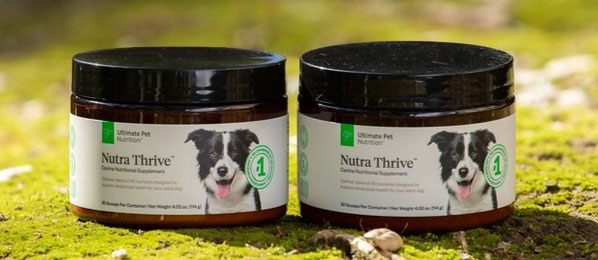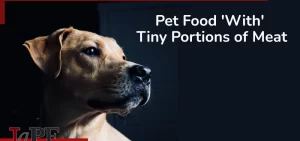Category:Cats
Part 3: Fun and Play.
by Ingrid Johnson, CCBC (Certified Cat Behavior Consultant)
Indoor cats should still be allowed to enjoy the scents and textures of the outdoors in a safe, controlled manner. Try growing cat grass or catnip. Cats naturally chew on greens, and if you provide them regularly, your cats will not experience the vomiting that often occurs when greens are first offered.
Olfactory stimulation can prove quite enriching for a species that lives by their noses so much more than we humans do. Silvervine, valerian, cat thyme, bush honeysuckles, buckbean, and ever-popular catnip can all elicit similar euphoric reactions.4d There is a genetic component that makes cats responsive to each of these compounds, so if they do not react to one, it is worthwhile to try another. Create “marinades” for cats. Saturate fabric/absorbent toys in separate bins for each of these olfactory experiences so that scents are not mixed and something different can be offered every few days.
Allow your cats to experience the seasons! In the fall, fill a cardboard box or old litter pan with leaves and sticks from outside. Throw some kibble in among the leaves for added fun! You can leave a large branch with foliage on your screen porch. Your cats can play on and around it, scratch it, or chew on it. Try hiding food around it for increased exploration. Be sure that you maintain proper flea and intestinal parasite control if you are going to do this. (Misty Pines has you covered! Check out our article on flea and tick control for help identifying which flea and tick deterrent you should use for your situation. Misty Pines carries most of the products listed in this article.) Grass clippings can be gathered, tied in knots, and added to stationary food puzzles for a unique foraging experience. Cookie sheets can be placed on decks when it snows to gather an interesting and cool tactile experience!
Screen porches are an absolutely amazing way to help your cats feel as if they are going outside. Even a small screen porch can satisfy your cat and offer a warm sunbeam. They are also great places to build vertical space. Place birdbaths and birdfeeders near the porch to create kitty television. Don’t have a screen porch? Open all of your doors and windows as often as you can. This helps air out the home, keeps it smelling fresh, and allows your cats to enjoy the sounds and smells of the outdoors, even without a porch.
Catios are all the rage now. They provide an enclosure that both you and your cats can enjoy and get your cats a little bit closer to nature. These “cat habitats” meet the needs for more mental and physical stimulation while simultaneously addressing wildlife concerns, feline safety concerns, and neighbors who may not want their gardens used as a litter box.3 Catios generally have a “natural floor” consisting of grass, flagstone, etc. and may be equipped with trees, fishponds, and other features. The purrfectfence.com, catterydesign.com, and the book Catify to Satisfy are great resources to help you get started.
Cat strollers are another awesome outlet for safe outdoor exploration. Begin by allowing your cat to explore the stroller while it’s inside and not moving. Then take your cat for a brief stroll up and down the driveway, or simply sit outside with your cat in the stroller to enjoy the view. Gradually, overtime, you can increase the distance of your walks. Many strollers will accommodate two cats, and it is, of course, always cool to bring the dog along too! Starting this process with young kittens and cats that are not fearful of travel is easier. Strollers are also a great way to give a little enrichment to handicapped cats (three-legged, arthritic, or paralyzed cats, for example).
I do not encourage leash and harness walks because they tend to encourage cats to bolt for the door. If you are going to take your cat on leashed walks, it’s best to take them outside in their cat carrier or take them out through a door that they can’t normally access to minimize door darting.
Interactive play is an imperative form of environmental enrichment. Play can strengthen the human/cat relationship and build bonds. It is also an enormous outlet for pent-up energy, an opportunity for exercise, and the ultimate way to let your little carnivore hunt! A cat’s greatest thrill in life is the eye-stalk-chase-pounce-kill sequence,2 and that is only achieved through hunting. Interactive play and foraging toys are the best hunting outlets you can provide. Cats can be very prey-specific, so you will need to find the prey that motivates your cat. Keep at it and try a variety of different toys. Do not leave the toys out unattended when not in use, as that lessens the novelty and motivation to play with them. A toy that is out of sight and out of mind creates much more interest when it appears.
A word about laser pointers: They never give your cat anything tangible to kill, and this can leave them feeling very frustrated and unsatisfied. Many people taunt with these toys, which is not very nice. Always follow a laser pointer game with a physical toy, tossed treat, or meal so there is some reward. If you choose to use laser pointers, they should only be used periodically as part of a rotation that also includes tangible interactive toys.
Many people say that their cats don’t play, but often, they only believe that because they simply do not know how to play with their cats. Don’t, for example, whack your cat in the head with a feather toy. Birds do not fly at cats’ faces! Be the prey. If you have a feather toy, flutter it like a bird, land, then take off again. If your toy has a small bug-like attachment, be a bug. Scurry it along the floor, hide behind the leg of a chair, stop moving, then dart about. If you are using plain string, slither it like a snake would. The point is to mimic natural movement the cat will be attracted to, not dangle the toy in front of their noses. This is a good time to remind ourselves of how cats see the world. Cats cannot focus on anything nearer than a foot away — another reason sticking the toy right in front of their muzzle provides limited response. To compensate for this, they swing their whiskers forward, making a 3-D tactile “photo” of objects right under their noses.5 Cats’ vision is built for seeing movement at a distance, and we must keep this in mind when we attempt to elicit play. It is also important to let your cat catch the toy once in a while or the game will become very unsatisfying. Yes, play is exercise and the idea is to get them to run, jump, and chase, but they have to be successful some of the time. Cats are built for speed and stealth, not endurance (they are not Labradors, after all), so a five- to 10-minute play session is plenty, but this should be done daily — ideally multiple times a day.
Motorized toys are always an option, but are best for bold personalities as more timid cats are usually deterred by the noise. Self-powered and automatic toys are not a substitute for interactive play but are an option when the owner does not have time but the cat wants to engage in something to do. Two I often recommend are The Fling-A Ma-String and the Undercover Mouse. There are many others with strings that disappear, mice that run away, or feathers that flop about on their own. They are worth a try, but be prepared to be disappointed in your cat’s response if they are not gregarious!
Don’t forget about old standbys such as cardboard boxes and paper bags. Cats love these fun items, and they are generally free. There are so many fun things you can do with a box! Offer it as is, stuff it with packing or tissue paper, close it and cut holes in it, put food inside and turn it into a foraging toy, or make it into a bed. Cardboard actually helps a cat with their “thermal neutral zone”; it is insulating and helps cats maintain their body temperature without expelling any energy. Be sure to rotate and replace these items regularly. Remove them for a week then offer a new one. Misty Pines also recommends using the cat’s carrier or crate as a place to play and for a cozy retreat. This will help when you need to get your cat into the carrier to go to the vet or boarding facility. Next month’s article will deal specifically with this issue.
Household items can make amazing cat toys as well. Crinkled-up balls of paper, aluminum foil balls, pen caps, milk jug rings — the list of things that entertain cats for free is long. Paper towel and toilet paper rolls are great fun too. You can do so much with them! Offer them on their own, run a string through one and tie it to a door, or fold the ends in to make a homemade foraging toy or catnip dispenser.
Cat tunnels are also very entertaining. You can use commercially available varieties or make them out of concrete form tubes from The Home Depot or Lowes (cut holes along the sides to make them more interesting). My cats seem to prefer the children’s tunnels from IKEA though. Tunnels add security for shy cats and allow them to cross rooms with large, open spaces where they would otherwise feel like prey. Remember that enrichment is not just about offering toys but also about providing safety and security for various personality types and simply making the home more cat-friendly.
Clicker training is not only a lot of fun; it can also build a much stronger relationship and level of understanding between you and your cats. Perhaps you want to teach practical behaviors for a purpose such as introducing cats who do not enjoy each other’s company, or maybe you want to use clicker training purely as an enrichment tool, for the fun and exercise. Clicker training is an awesome way to build foundation behaviors for feline agility, and teaching commands such as “come” or “kennel up” can even be life-saving.
Lastly, a few tips designed especially for seniors: Make it easy for your seniors to easily access sunbeams and heat in general. Offer heating pads, snuggle safe discs, fuzzy beds near fireplaces, and other cozy options. One of the kidney’s main functions is to help regulate body temperature, and because many senior cats have some degree of arthritis and/or kidney disease, they are often heat seekers. Provide lots of warm, plush bedding for all of your cats, but especially for older ones. Give them room service! Older cats will often miss meals and subsequently lose weight because they choose warmth and comfort over making the trek to the food bowl. Bring resources closer for seniors so they have easier access to all of their basic needs.
Conclusions
In the end, if boredom, frustration, and stress are the leading causes of behavior problems in indoor cats, I propose that we, the humans, stop creating these problems. Alleviate boredom by providing lots of fun things to do. Reduce stress by offering your cats access to their basic resources in places where they feel comfortable and secure. The cat’s time has come! They have surpassed dogs as the most popular pet in America. It is time that we develop a better understanding of what our feline companions need and do a better job of meeting those needs. It is time that we start setting our cats up for success!
Citations
- Young RJ. Environmental enrichment for captive animals. Oxford: Blackwell Science; 2003:1-2.
- Neville PF. An ethical viewpoint: the role of veterinarians and behaviorists in ensuring good husbandry for cats. Paper presented at: American Association of Feline Practitioners; 2002; Tempe, Arizona.
- Overall KL. Manual of clinical behavioral medicine for dogs and cats. St Louis: Elsevier;201 3:106-9.
- Beaver RVG. Feline behavior A guide for veterinarians. 2nd ed. St. Louis: Saunders Co; 2003:54, 221.
- Bradshaw J. Cat sense. New York: Basic Books; 2013:105.
Part 1: https://www.mistypinespetcompany.com/environmental-enrichment-for-indoor-cats-maximizing-your-home-to-better-meet-your-cats-needs-part-1/ [display-posts id=”13915″]
Part 2: https://www.mistypinespetcompany.com/environmental-enrichment-for-indoor-cats-maximizing-your-home-to-better-meet-your-cats-needs-part-2/ [display-posts id=”14413″]








